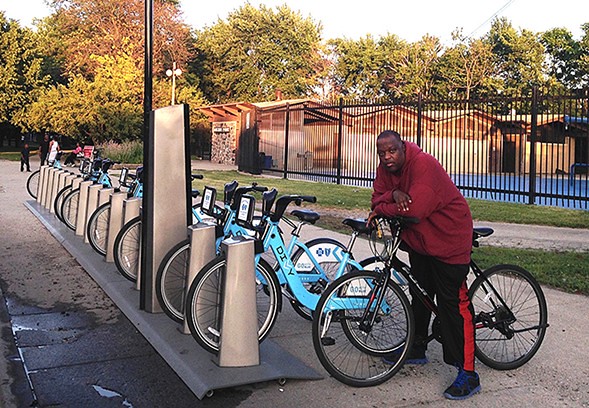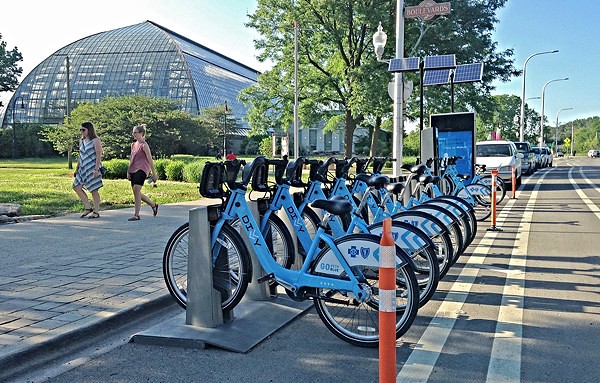
[Last November the Chicago Reader launched a weekly transportation column written by Streetsblog Chicago editor John Greenfield. This partnership allows Streetsblog to extend the reach of our livable streets advocacy. We syndicate a portion of the column on the day it comes out online; you can read the remainder on the Reader’s website or in print. The paper hits the streets on Thursdays.]
Imagine if the Chicago Transit Authority, a public transportation system that's subsidized by taxpayer dollars, were mostly serving wealthy white folks. That would be messed up, right?
Last year the Chicago Department of Transportation admitted to a similarly lopsided situation with the publicly funded Divvy network, which was launched in 2013. Its survey of annual members revealed that, as is the case with most U.S. bike-share systems, membership skewed heavily white, affluent, well educated, young, and male.
That finding was no surprise. Arguably, Divvy got off on the wrong foot from a social justice standpoint in 2013, when the city concentrated most of the first 300 docking stations in dense, well-off areas downtown and on the near-north lakefront in an effort to make the system financially sustainable.
And while stations in these areas were generally installed with tight quarter-mile spacing, making it easy to walk to and from the docks from many destinations, the rest of the city typically got less-convenient half-mile spacing. Moreover, the $75 (now $99) annual membership fee and credit card requirements were financial barriers to low-income and unbanked Chicagoans.
To its credit, CDOT has recently taken steps to address Divvy's equity problem. When the system added 175 more stations last summer, many of them went to low-to-moderate-income, predominantly African-American and Latino communities on the south and west sides.
And last July the department rolled out the Divvy for Everyone (D4E) program, which offers onetime $5 annual memberships to Chicagoans making $35,310 or less a year and waives the credit card requirement. More than 1,300 residents have signed up so far, well over CDOT's target of 750 for the year.
This summer the Divvy system is expanding to 584 stations and 6,000 bikes, including ten stations in Evanston and 13 in Oak Park (the suburbs lined up their own funding). Of the 85 stations being installed in Chicago, almost all are going to low-to-moderate-income communities of color on the south and west sides.
So far, however, simply dropping stations and bikes in underserved neighborhoods has generally not resulted in good ridership numbers. An analysis by the South Side Weekly found that affluent areas with quarter-mile station density like Lakeview, Lincoln Park, and the Near North Side averaged between 1,500 and 3,000 rides per station in fall 2015. But lower-income neighborhoods like Little Village, Back of the Yards, and Greater Grand Crossing, with half-mile spacing, averaged 100 or fewer trips per station.
To encourage Divvy use in black and Latino communities, CDOT is partnering with bike equity groups like Slow Roll Chicago and Go Bronzeville to spread the word about D4E. In addition, the department's "bicycling ambassadors" outreach team will offer six weeks of free adult bike-handling classes this summer on the south and west sides only.
Last week I took out one of the big blue bikes and set out for the heavily African-American communities of West Garfield Park and Austin, the first neighborhoods to get docks in this round of installations. I wanted to get local perspectives on whether west-siders are likely to use Divvy.
By the new bike-share station outside the Garfield Park Conservatory, I met Decoties Parks, a construction worker and roofer who was pedaling a mountain bike from his company's warehouse to his home in nearby West Humboldt Park.
Parks said the expansion of Divvy into the west side is good news for residents who don't own a bike but would like to start cycling for exercise, or as an alternative to riding crowded buses. After I explained how the D4E program works, he said the $5 memberships would likely appeal to locals. "That's a good deal for people who ain't making that much money," he said.





